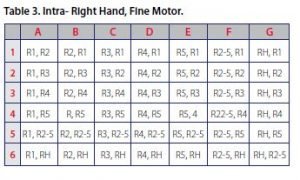Category: Stress

by: Tracy S. Cummings, MD, Psychiatrist, Lindner Center of HOPE
Children and teens react, in part, on what they see from the adults around them. When parents and caregivers deal with the COVID-19 calmly and confidently, they can provide the best support for their children. Parents can be more reassuring to others around them, especially children, if they are better prepared.
Not all children and teens respond to stress in the same way. Some common changes to watch for include
- Excessive crying or irritation in younger children
- Returning to behaviors they have outgrown (for example, toileting accidents or bedwetting)
- Excessive worry or sadness
- Unhealthy eating or sleeping habits
- Irritability and “acting out” behaviors in teens
- Poor school performance or avoiding school
- Difficulty with attention and concentration
- Avoidance of activities enjoyed in the past
- Unexplained headaches or body pain
- Use of alcohol, tobacco, or other drugs
There are many things you can do to support your child
- Take time to talk with your child or teen about the COVID-19 outbreak. Answer questions and share facts about COVID-19 in a way that your child or teen can understand.
- Reassure your child or teen that they are safe. Let them know it is ok if they feel upset. Share with them how you deal with your own stress so that they can learn how to cope from you.
- Limit your family’s exposure to news coverage of the event, including social media. Children may misinterpret what they hear and can be frightened about something they do not understand.
- Try to keep up with regular routines. If schools are closed, create a schedule for learning activities and relaxing or fun activities.
- Be a role model. Take breaks, get plenty of sleep, exercise, and eat well. Connect with your friends and family members.
The emotional impact of an emergency on a child depends on a child’s characteristics and experiences, the social and economic circumstances of the family and community, and the availability of local resources. Not all children respond in the same ways. Some might have more severe, longer-lasting reactions. The following specific factors may affect a child’s emotional response:
- Direct involvement with the emergency
- Previous traumatic or stressful event
- Belief that the child or a loved one may die
- Loss of a family member, close friend, or pet
- Separation from caregivers
- Physical injury
- How parents and caregivers respond
- Family resources
- Relationships and communication among family members
- Repeated exposure to mass media coverage of the emergency and aftermath
- Ongoing stress due to the change in familiar routines and living conditions
- Cultural differences
- Community resilience
For 7 to 10 year olds
Older children may feel sad, mad, or afraid that the event will happen again. Peers may share false information; however, parents or caregivers can correct the misinformation. Older children may focus on details of the event and want to talk about it all the time or not want to talk about it at all. They may have trouble concentrating.
For preteens and teenagers
Some preteens and teenagers respond to trauma by acting out. This could include reckless driving, and alcohol or drug use. Others may become afraid to leave the home. They may cut back on how much time they spend with their friends. They can feel overwhelmed by their intense emotions and feel unable to talk about them. Their emotions may lead to increased arguing and even fighting with siblings, parents/caregivers or other adults.
More on taking care of your family
Disasters and other crisis events have the potential to cause short- and long-term effects on the psychological functioning, emotional adjustment, health, and developmental trajectory of children. It’s important that pediatricians, and all adults in a position to support children, are prepared to help children understand what has happened and to promote effective coping strategies. This will help to reduce the impact of the disaster as well as any associated bereavement and secondary stressors.
Stress is intrinsic to many major life events that children and families face, including the experience of significant illness and its treatment. The information provided about how to help children cope after disaster and crisis is therefore relevant for many encounters that pediatricians will have with children, even outside the context of a disaster.
Talk about the event with your child. To not talk about it makes the event even more threatening in your child’s mind. Silence suggests that what has occurred is too horrible to even speak of. Silence may also imply to your child that you don’t think their reactions are important or appropriate.
- Start by asking what your child has already heard about the events and what understanding he or she has reached. As your child explains, listen for misinformation, misconceptions, and underlying fears or concerns, and then address these.
- Explain – as simply and directly as possible – the events that occurred. The amount of information that will be helpful to a child depends on his or her age. For example, older children generally want and will benefit from more detailed information than younger children. Because every child is different, take cues from your own child as to how much information to provide.
- Encourage your child to ask questions, and answer those questions directly. Like adults, children are better able to cope with a crisis if they feel they understand it. Question-and-answer exchanges help to ensure ongoing support as your child begins to understand the crisis and the response to it.
- Limit television viewing of disasters and other crisis events, especially for younger children. Consider coverage on all media, including the internet and social media. When older children watch television, try to watch with them and use the opportunity to discuss what is being seen and how it makes you and your child feel.
Healthy Children. Org provides additional insights
- Recognize that your child may appear disinterested. In the aftermath of a crisis, younger children may not know or understand what has happened or its implications. Older children and adolescents, who are used to turning to their peers for advice, may initially resist invitations from parents and other caregivers to discuss events and their personal reactions. Or, they may simply not feel ready to discuss their concerns.
- Reassure children of the steps that are being taken to keep them safe. Terrorist attacks and other disasters remind us that we are never completely safe from harm. Now more than ever it is important to reassure children that, in reality, they should feel safe in their schools, homes, and communities.
- Consider sharing your feelings about the event or crisis with your child. This is an opportunity for you to role model how to cope and how to plan for the future. Before you reach out, however, be sure that you are able to express a positive or hopeful plan.
- Help your child to identify concrete actions he or she can take to help those affected by recent events. Rather than focus on what could have been done to prevent a terrorist attack or other disaster, concentrate on what can be done now to help those affected by the event.
AACAP Recommendations for talking to children about COVID-19 :
Talking to Children About Coronavirus (COVID19)
- Remember that children tend to personalize situations. For example, they may worryabout their own safety and the safety of immediate family members. They may alsoworry about friends or relatives who travel or who live far away.
- Be reassuring, but don’t make unrealistic promises. It’s fine to let children know that they are safe in their house or in their school. But you can’t promise that there will be no cases of coronavirus in your state or community.
- Let children know that there are lots of people helping the people affected by the coronavirus outbreak. It’s a good opportunity to show children that when something scary or bad happens, there are people to help.
- Children learn from watching their parents and teachers. They will be very interested in how you respond to news about the coronavirus outbreak. They also learn from listening to your conversations with other adults.
- Don’t let children watch too much television with frightening images. The repetition of such scenes can be disturbing and confusing.
- Children who have experienced serious illness or losses in th
- Although parents and teachers may follow the news and the daily updates with interest and attention, most children just want to be children. They may not want to think about what’s happening across the country or elsewhere in the world. They’d rather play ball, go sledding, climb trees or ride bikes.









